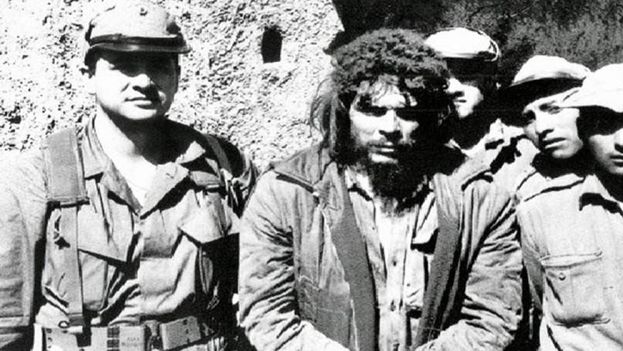
![]() 14ymedio, Reinaldo Escobar, Havana, 5 October 2017 — Half a century after the death of Ernesto ‘Che’ Guevara, the official narrative of what happened on October 9, 1967 in La Higuera, Bolivia has significantly changed.
14ymedio, Reinaldo Escobar, Havana, 5 October 2017 — Half a century after the death of Ernesto ‘Che’ Guevara, the official narrative of what happened on October 9, 1967 in La Higuera, Bolivia has significantly changed.
After repeating for decades that Che was murdered in a school in that South American country, the Communist Party’s propaganda media, and in particular the official Party newspaper Granma, have rebaptized the event “The fall in combat of the Heroic Guerrilla.”
The variation is no small thing if one takes into account that dying during an armed confrontation, in addition to having a more heroic character, implies that the deceased was not a victim, but an active participant in a conflict. At the stroke of a pen, government propaganda has opted to discard the version of a crime and highlight the military epic, thus withdrawing blame from those who ordered the trigger to be pulled.
Had he not died in those bellicose circumstances, Guevara might have celebrated his status as a nonagenarian on June 14, although others say that he was actually born on May 14. Like every human being turned into myth, his biography is plagued with contradictions and dark areas, controversies and half truths. Even the dates of his arrival and departure from this world are under discussion.
Perhaps if he not died in La Higuera, the Argentine would have ended his days in the boring offices of some ministry or would have been ousted from power in one of the purges that took place over the last half a century. In any case there would not be so many legends about his life today, nor would any films have been made idealizing or stigmatizing it.
Without those rifle shots fired at 1:10 pm in that small classroom, the man in that emblematic photo where he is seen with long hair and a gaze lost in the distance would not have become a twentieth century icon. He would not fill the shelves of the souvenir shops or stare out from the shirts of so many young people.
With slight variations, all accounts agree that on October 8, 1967 Guevara was captured and one day later, without having been subjected to a judicial process, he lost his life at the hands of a Bolivian soldier who carried out the orders of his Government. He was unarmed and wounded.
Other versions directly or indirectly blame the CIA, especially the Cuban Félix Rodríguez, alias El Gato.
At the Summit of the Americas held in Panama in April 2015, Cuban official media reported that Rodríguez was there to meet with some of the island’s opponents who attended the event. Among other insults from the ‘shock troops’ organized by the Plaza of the Revolution at the Summit, Cuba’s human rights activists were accused of having traveled there “to embrace Che’s murderer.” Now this individual appears to have been exonerated from homicide by the grace of the pro-government press.
Cuba continues to insist on commemorating the death of Guevara on October 8, as Fidel Castro mentioned in the first official information about his death. That is the reason why this Sunday a common program with symphonic works, poems and songs will be presented in several concert halls of the country.
In the city of Santa Clara, where the memorial is located with the remains of the other Cubans who fell in the guerrilla war in Bolivia, recalling the date will be the central act. None of those present will dare to question the significant change in the official version of events surrounding the anniversary.
